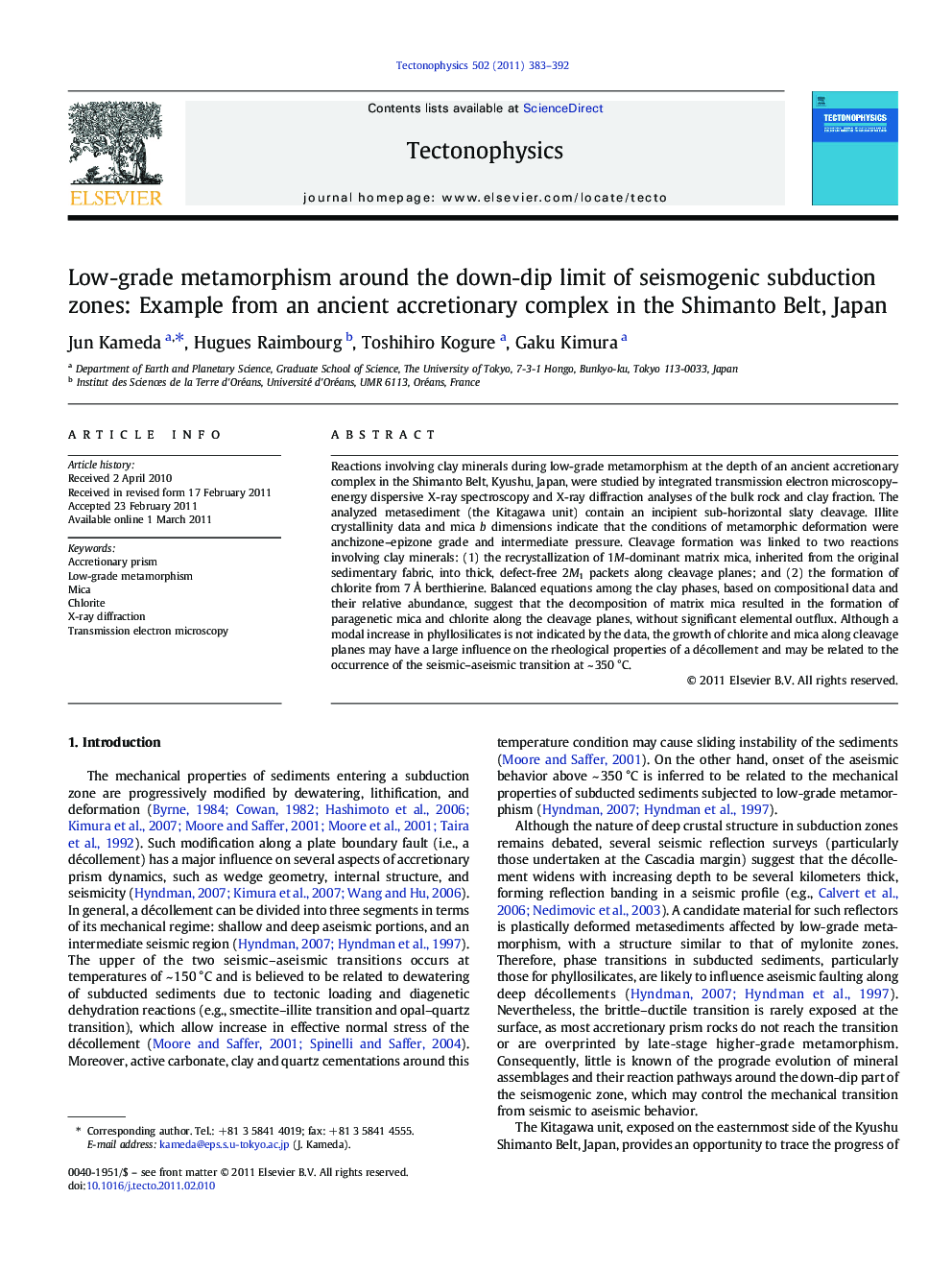| کد مقاله | کد نشریه | سال انتشار | مقاله انگلیسی | نسخه تمام متن |
|---|---|---|---|---|
| 4693132 | 1636848 | 2011 | 10 صفحه PDF | دانلود رایگان |

Reactions involving clay minerals during low-grade metamorphism at the depth of an ancient accretionary complex in the Shimanto Belt, Kyushu, Japan, were studied by integrated transmission electron microscopy–energy dispersive X-ray spectroscopy and X-ray diffraction analyses of the bulk rock and clay fraction. The analyzed metasediment (the Kitagawa unit) contain an incipient sub-horizontal slaty cleavage. Illite crystallinity data and mica b dimensions indicate that the conditions of metamorphic deformation were anchizone–epizone grade and intermediate pressure. Cleavage formation was linked to two reactions involving clay minerals: (1) the recrystallization of 1M-dominant matrix mica, inherited from the original sedimentary fabric, into thick, defect-free 2M1 packets along cleavage planes; and (2) the formation of chlorite from 7 Å berthierine. Balanced equations among the clay phases, based on compositional data and their relative abundance, suggest that the decomposition of matrix mica resulted in the formation of paragenetic mica and chlorite along the cleavage planes, without significant elemental outflux. Although a modal increase in phyllosilicates is not indicated by the data, the growth of chlorite and mica along cleavage planes may have a large influence on the rheological properties of a décollement and may be related to the occurrence of the seismic–aseismic transition at ~ 350 °C.
Research highlights
► Pervasive slaty cleavages develop in the Kitagawa unit in the Shimanto Belt, Japan.
► Low-grade metamorphism resulted in mica–chlorite paragenesis along the cleavages.
► The reactions proceeded without modal fluctuations of phyllosilicate content.
► Subhorizontal mica–chlorite networks may contribute to aseismic behavior of deep décollement.
Journal: Tectonophysics - Volume 502, Issues 3–4, 20 April 2011, Pages 383–392